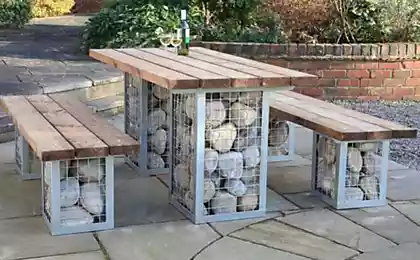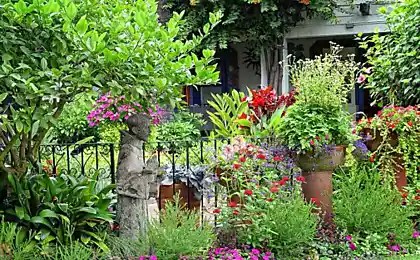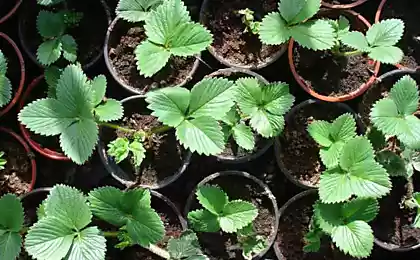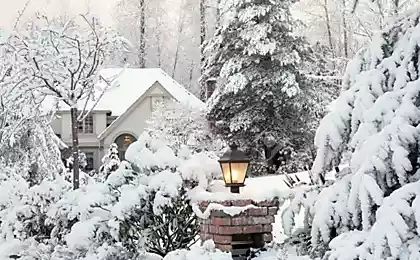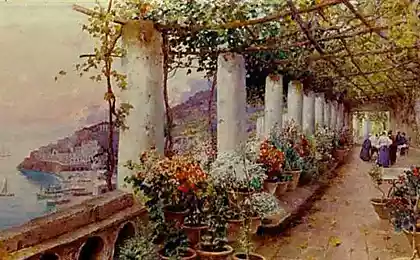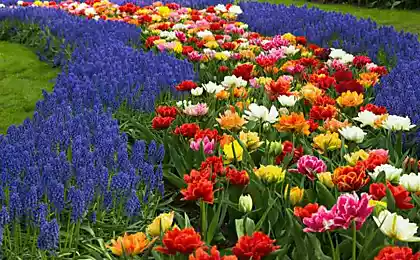412
The subtleties of caring for a Yucca garden
In nature, the Yucca grows in the tropical and subtropical latitudes. Evergreen beauty Yucca garden from the tropics. Low melovatskoe tree or shrub belongs to the family of the agave. Yucca is also called the "tree of happiness", in fact noticed that this heat-loving exotic plant brings to its owners a fortune. Today it is a beautiful plant stems which are studded with numerous white or cream-colored bells decorated with many suburban areas. Grow Yucca garden and as indoor plants, planting her spacious outdoor pots. In outdoor pots decorative palm looks extremely impressive, speaking a worthy addition to the interior offices and apartments.
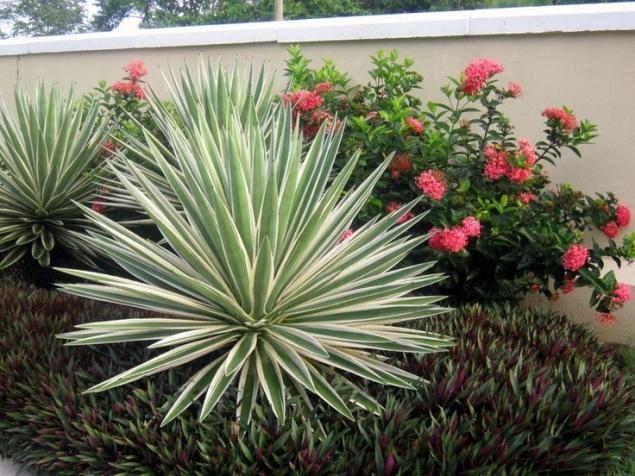
How to care for the "tree of happiness"
Yucca garden prefers a well ventilated Sunny areas.
It is pollinated only by one species of moth of the genus pronuba who live in these climates. Therefore, planning to plant on his land Yucca garden of PPE should be prepared for the fact that even with abundant flowering, the fruit is not fastened.
Even in nature and there are more than 30 species of Yucca, but in our climatic conditions are mainly grown two of these: filamentous and nice.
The compliance light regime
Yucca garden inherently light - and heat-loving. But, despite this care of a plant requires significant effort. "Tree of happiness" feels comfortable in lightly shaded areas, but the most decorative showcases in open and Sunny places.
Yucca is not a heat-loving plants.
When there is insufficient light, the palm loses its elegant fan-shaped leaves.
When choosing a place for planting palm trees prefer well-lit, but not much is blown. This condition is important to observe if the plant will spend the winter in the open ground. In the winter months in the sheltered area the snow will cover the leaves and stems of yuccas, protecting them from peremerzaniya.
The requirement to moisture
Most comfortable Jukka feels on the soil, composed of turf and leaf soil, enriched with humus.
The most best moderate watering. When setting the humidity regime it is easiest to focus on the appearance of the plant. So straightened thick sheets twisted in a spiral threads indicate sufficient moisture. If the leaves gradually begin to curl up and spiral hairs lifelessly to save the plant needs additional watering.
In the dry months of the aboveground part of the plant to be sprayed is not necessary. Suffice it to periodically wipe with a damp sponge or cloth sheets, gently clearing them of dust. In winter the frequency of watering reduced.
The "tree of happiness" is not tolerant to stagnant water, the abundance of which can cause rotting of the root system. This should be considered when growing trees in pots. Moisture that accumulates in the pan after irrigation, should be promptly drained.
Soil composition
Tree is unpretentious to the soil composition. It is equally good for both sandy and clay soils.
Preparing a hole for planting trees with a depth of 80 cm and diameter 40 cm, it is important to equip a drainage system and the soil is "diluted" with sand. For example: black soil to make it more suitable for growing tropical exotic, it should be mixed with river sand in the ratio of 4:1.
Yucca, like all flowering plants, need regular feeding with mineral and organic fertilizers, which contribute during the growing season a couple of times a month.
Do I need to cover the flower Yucca
Ideally, the garden Yucca on the winter time is better to enter into a warm room.
So growing a palm tree in pots whether in winter months to use it as a fancy interior decoration, but with the advent of spring to make the veranda or in the garden.
Heat-loving plant can spend the winter outdoors. But it needs extra protection. For this cold weather palm leaves tied into a bun, and then tuck. This is enough to protect the growing point and young leaves from frost.
The very soil around the Yucca, it is desirable to insulate fallen from the trees leaves or the same covering material.
As the covering material can be used agrotextile.
Some gardeners in front of the shelter half of the flower cut the stem of the plant.
Reproduction features of
Propagated Yucca garden in several ways.
With proper care Yucca garden rarely sick. But, like most exotics, often suffering from the attack of pests.
Slugs and snails are the main pests of the "tree of happiness".
To get rid of them, treating a palm tree with insecticide, which in a wide assortment of gardening stores.
No less harm to exotic causes and scale of the appearance of which can be judged by the formation on leaf plates brown plaques. Because these pests do not respond to chemical treatment, to deal with them have to manually. To do this, once a week, wipe the leaves with a cotton swab dipped in an alcohol solution. published
P. S. And remember, only by changing their consumption — together we change the world! ©
Source: 101dizain.ru

How to care for the "tree of happiness"
Yucca garden prefers a well ventilated Sunny areas.
It is pollinated only by one species of moth of the genus pronuba who live in these climates. Therefore, planning to plant on his land Yucca garden of PPE should be prepared for the fact that even with abundant flowering, the fruit is not fastened.
Even in nature and there are more than 30 species of Yucca, but in our climatic conditions are mainly grown two of these: filamentous and nice.
The compliance light regime
Yucca garden inherently light - and heat-loving. But, despite this care of a plant requires significant effort. "Tree of happiness" feels comfortable in lightly shaded areas, but the most decorative showcases in open and Sunny places.
Yucca is not a heat-loving plants.
When there is insufficient light, the palm loses its elegant fan-shaped leaves.
When choosing a place for planting palm trees prefer well-lit, but not much is blown. This condition is important to observe if the plant will spend the winter in the open ground. In the winter months in the sheltered area the snow will cover the leaves and stems of yuccas, protecting them from peremerzaniya.
The requirement to moisture
Most comfortable Jukka feels on the soil, composed of turf and leaf soil, enriched with humus.
The most best moderate watering. When setting the humidity regime it is easiest to focus on the appearance of the plant. So straightened thick sheets twisted in a spiral threads indicate sufficient moisture. If the leaves gradually begin to curl up and spiral hairs lifelessly to save the plant needs additional watering.
In the dry months of the aboveground part of the plant to be sprayed is not necessary. Suffice it to periodically wipe with a damp sponge or cloth sheets, gently clearing them of dust. In winter the frequency of watering reduced.
The "tree of happiness" is not tolerant to stagnant water, the abundance of which can cause rotting of the root system. This should be considered when growing trees in pots. Moisture that accumulates in the pan after irrigation, should be promptly drained.
Soil composition
Tree is unpretentious to the soil composition. It is equally good for both sandy and clay soils.
Preparing a hole for planting trees with a depth of 80 cm and diameter 40 cm, it is important to equip a drainage system and the soil is "diluted" with sand. For example: black soil to make it more suitable for growing tropical exotic, it should be mixed with river sand in the ratio of 4:1.
Yucca, like all flowering plants, need regular feeding with mineral and organic fertilizers, which contribute during the growing season a couple of times a month.
Do I need to cover the flower Yucca
Ideally, the garden Yucca on the winter time is better to enter into a warm room.
So growing a palm tree in pots whether in winter months to use it as a fancy interior decoration, but with the advent of spring to make the veranda or in the garden.
Heat-loving plant can spend the winter outdoors. But it needs extra protection. For this cold weather palm leaves tied into a bun, and then tuck. This is enough to protect the growing point and young leaves from frost.
The very soil around the Yucca, it is desirable to insulate fallen from the trees leaves or the same covering material.
As the covering material can be used agrotextile.
Some gardeners in front of the shelter half of the flower cut the stem of the plant.
Reproduction features of
Propagated Yucca garden in several ways.
- Seeds. Their sown seedlings in late winter and grown at room temperature to a state two-year seedlings. Only with the coming of spring after the appearance of 3-4 true leaves seedlings are transplanted in open ground.
- Root cuttings. Horizontal rhizomes the mother plants are put in the grooves, the bottom of which has a drainage layer, and covered with earth. Maintaining the humidity and purity of the filled grooves, in 3-4 months you can get a new young plant.
- Stem cuttings. In the first half of the summer with the mother plants are cut side outlet with a piece of stem. The lower leaves of the cutting are removed, the slices sprinkled with crushed charcoal. The cuttings are planted, buried 3-4 cm in sand - peat soil mix in a greenhouse. Maintaining the humidity conditions and the greenhouse pritenyaya from the sun's rays, leave the cuttings until next spring, and then transplanted to the open ground.
With proper care Yucca garden rarely sick. But, like most exotics, often suffering from the attack of pests.
Slugs and snails are the main pests of the "tree of happiness".
To get rid of them, treating a palm tree with insecticide, which in a wide assortment of gardening stores.
No less harm to exotic causes and scale of the appearance of which can be judged by the formation on leaf plates brown plaques. Because these pests do not respond to chemical treatment, to deal with them have to manually. To do this, once a week, wipe the leaves with a cotton swab dipped in an alcohol solution. published
P. S. And remember, only by changing their consumption — together we change the world! ©
Source: 101dizain.ru





